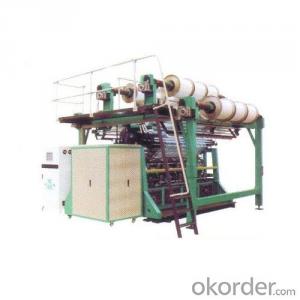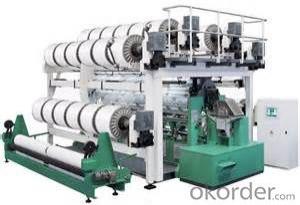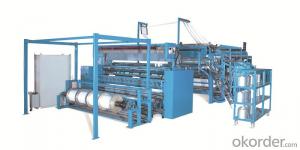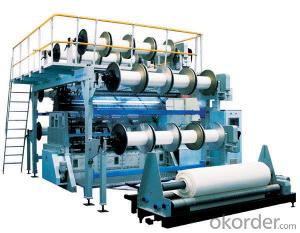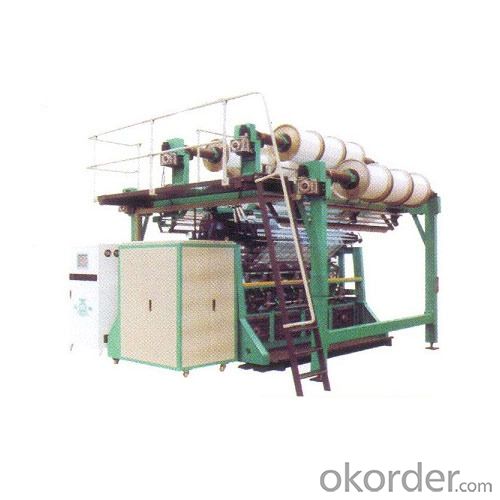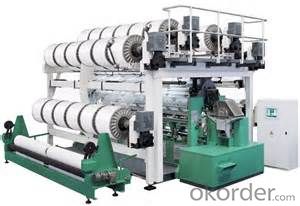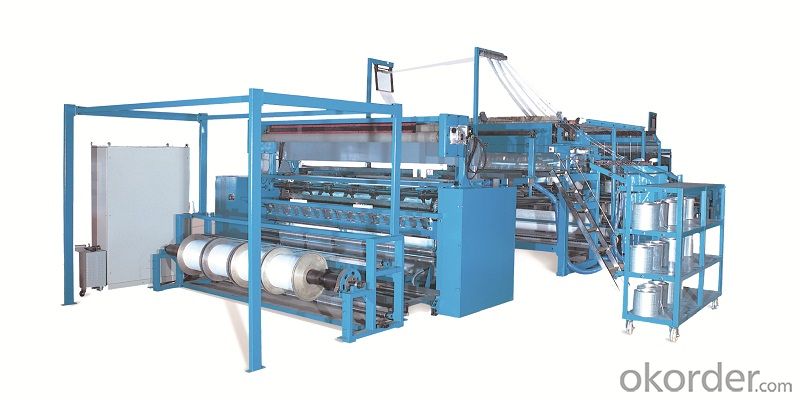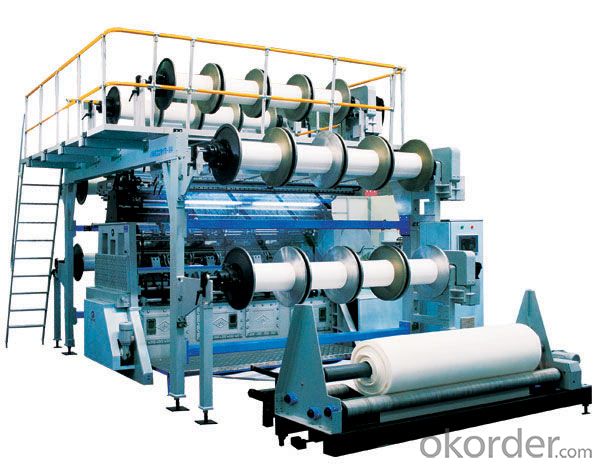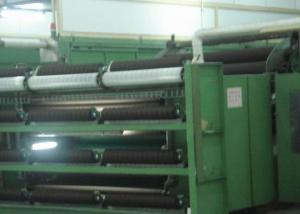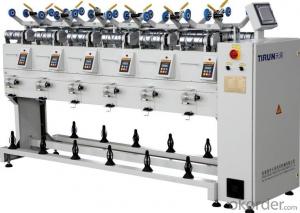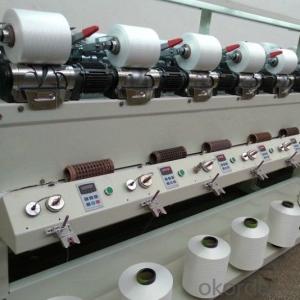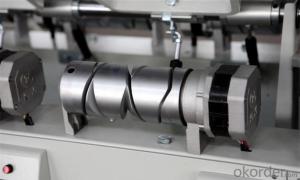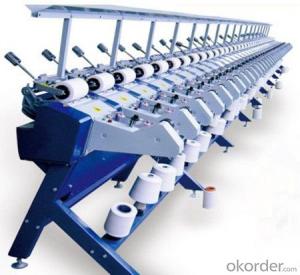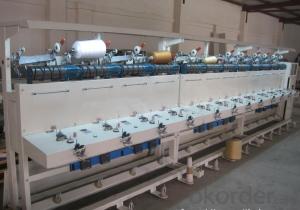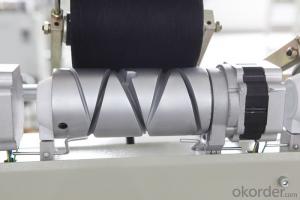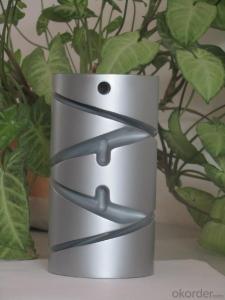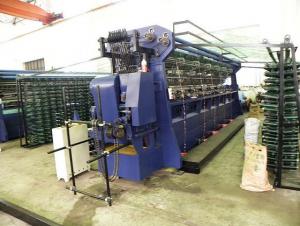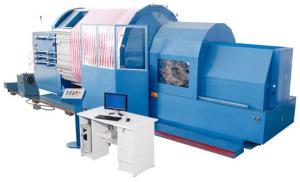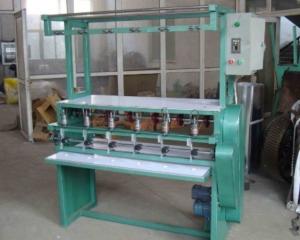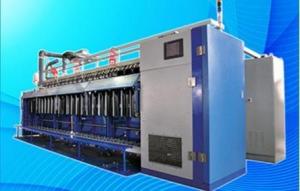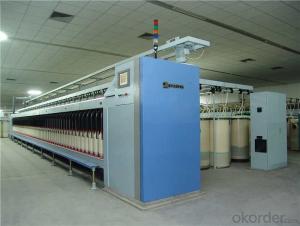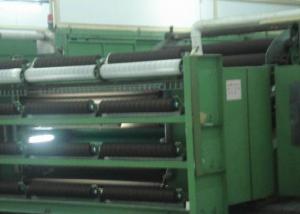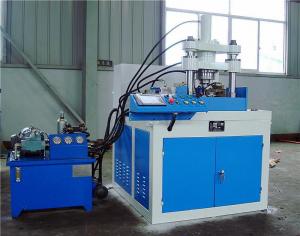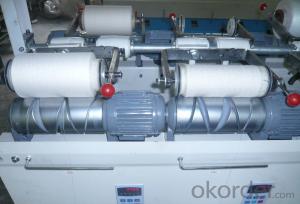E2291 warp knitting machine
- Loading Port:
- China Main Port
- Payment Terms:
- TT OR LC
- Min Order Qty:
- -
- Supply Capability:
- -
OKorder Service Pledge
OKorder Financial Service
You Might Also Like
APPLICATION:
The Double-Bar Warp Knitting Machine uses chemical fiber Such as polyester,polyamide,acrylic,polypropyleneand viscose or natural fiber such as spinning cotton yarn,blendedyarn etc.to produce short-pile fabric with Pile height of 1.5~6mm or space fabricwith thickness of 3~12mm.The fabric feels Plump.gentle andwon't come off from the base cloth,and is widely usedfor garments。shoes fabric,cotton blanket,automobile cushion。sofa-cover,bed cloth。side clothand curtain etc.
CHARACTERISTICS:
1.Knitting Elements
Driven by full-eccentric levers and designed on the basis of thecomputer-animated simulation.the Knitting Ele-ments take on reliable and stablemotions with excellent
interactions:thus the fabric production is ensured in high quality,and theproductivity iS increased efficlently.
2.Yarn Let-off Device
Mechanical Let-off Device or EBA Electronic Let-off Device that is also goodfor double-speed yarn feeding is optional.
3. Latch Needle Block or Latch individual lnsertion mechanism is optional andmeets the need of different users.
4.The trace plate space between knock-over bars can be adjusted as a wholewith an optional devlce,which is convenient fOr the user to change knittingfabrics with
different thickness swiftly.
5.Outlook of Machine
Humanized design,precise machining and delicate painting form an impressive outlook ofmachine。
MAIN TECHNICAL SPECIFICATIONS: | ||
Machine Type | E2291/6 (6 Guide Bars) | E2291/7 (7 Guide Bars) |
Needle | Latch Needle | |
Gauge | E16、E20、E22、E24(Needles/Inches) | |
Working Width | 84 ” (2134mm) 、136 ” (3454mm) 154 ” (3911mm) 、170 ” (4318mm) | |
Number of Guide Bars | 6 Bars (2 Pile Bars) | 7 Bars (3 Pile Bars) |
Distance Between Knock-over Bars | 3~12mm | |
Beam Support | Separate Beam Support
Max. Size of Sectional Beam For Pile Bars φ1016×535mm(40") | Separate Beam Support Max. Size of Sectional Beam For Pile Bars φ765×535mm(30") |
Pattern Drive Device | N-type Pattern Drive Device in 4 or 6 tempi of Link chains Or Pattern Cams | |
Let-off Device | Mechanical or EBA Electronic Let-off Device | |
Density Range | 4.28~31.22(Courses/CM) | |
Max. speed | 800~950(Courses/Min.) | 650(Courses/Min.) |
Inching Speed | 20(rpm) | |
Max. Fabric Batching Diameter | φ1270mm | |
Main Motor Power | 5.5KW or 7.5KW | |
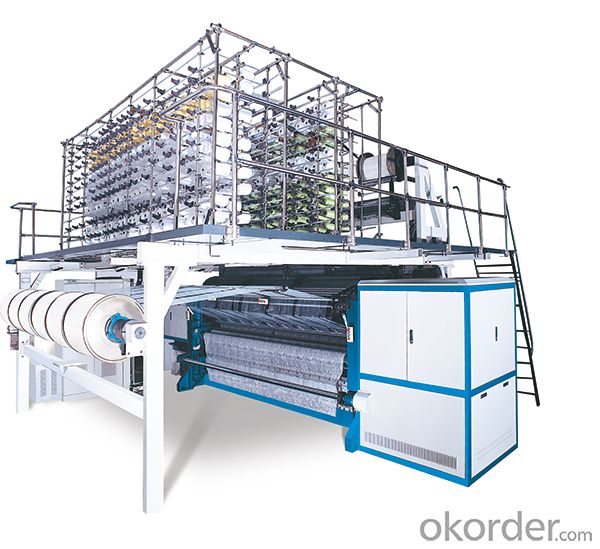
- Q: What are the general fixed assets of the textile industry?
- Vinylon filament spinning machine, cutting spinning roving machine, traction machine, drafting machine cutting machine
- Q: What is the difference between yarn spinning and ring spinning?
- Such as carding, combing and blending, the bead is driven by the bobbin through the yarn to rotate around the collar, twist, and the friction of the collar is slightly smaller than that of the bobbin and the winding speed is high, The shape of the ring yarn, the fiber is mostly inside and outside the transfer of the conical spiral, so that the fiber in the yarn inside and outside the winding connection, the yarn structure is close, high strength, suitable for the system and weaving and knitting and other products.
- Q: What are the different effects of textile equipment?
- Clothing processing and finishing several major steps, before and after the equipment is no less than twenty units
- Q: What is the history of the development of textile machinery?
- China in the Spring and Autumn Warring States have been using hand spinning spinning, to the Song Dynasty has been invented more than 30 spindle hydraulic large spinning wheel. 1769 British R. Akwright) (also translated Richard Ackerite) manufacturing hydraulic spinning machine.
- Q: Is the textile machine made of those accessories?
- There is no concept of spinning machine, spinning and weaving are separate, and spinning and weaving process is very long, do not want you to imagine only one or two equipment can be, the entire production process involved in the equipment up to a dozen
- Q: Textile machinery points which six categories? What is the main role?
- The processing of different fibers, such as cotton, silk, silk, wool, etc., is completely different, and there is a wide variety of machines that are required. Classification As long as there are spinning equipment, weaving equipment, printing and dyeing equipment, finishing equipment, chemical fiber spinning equipment, reeling equipment and non-woven equipment.
- Q: What are the related fields of textile engineering?
- Familiar with the principles, policies and regulations relating to the textile industry;
- Q: Why did the first industrial revolution begin with the sign of Jenny's textile machine rather than shuttle?
- Because the first "Jenny machine" is the machine, the first to complete the transition from tool to machine, on the other hand, due to the "Jenny machine" appears, it promotes the related weaving, power, transportation and a series of industry inventions and use Machine, which opened the prelude to the British industrial revolution. That is, our history books agree with the beginning of the industrial revolution signs!
- Q: What is the task of preparing the process before spinning?
- Clear mixed in the raw cotton acrobatics and neps, impurity removal rate of 40% to 70%
- Q: What is the structure and working principle of Jenny's spinning machine?
- The spindle is the sleeve of the sleeve gap installed in the spindle, the spindle is a thin rod with a hook on the top. The spindle is mounted on a small runner and the hand wheel drives the small wheel through the rope.
Send your message to us
E2291 warp knitting machine
- Loading Port:
- China Main Port
- Payment Terms:
- TT OR LC
- Min Order Qty:
- -
- Supply Capability:
- -
OKorder Service Pledge
OKorder Financial Service
Similar products
Hot products
Hot Searches
Related keywords
